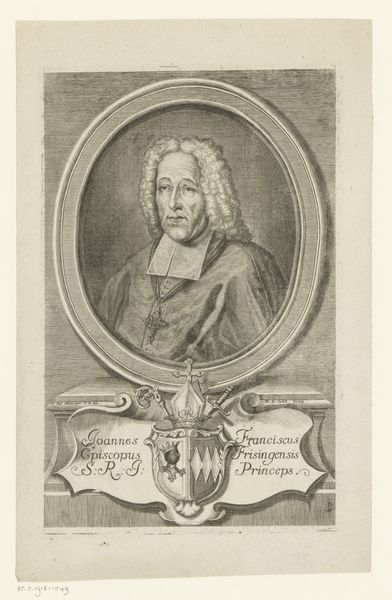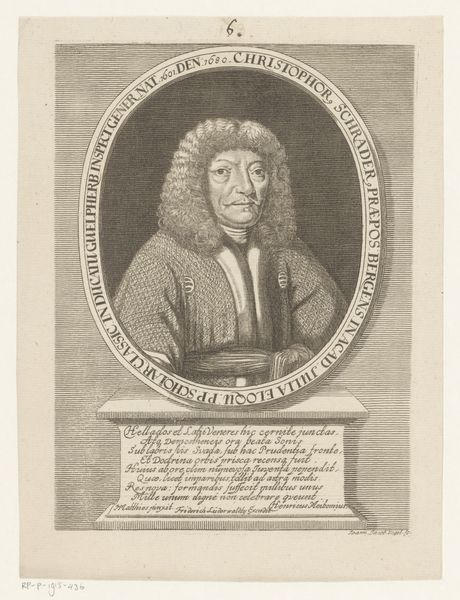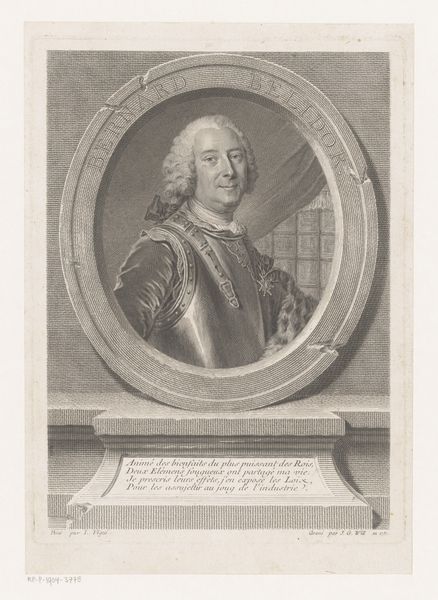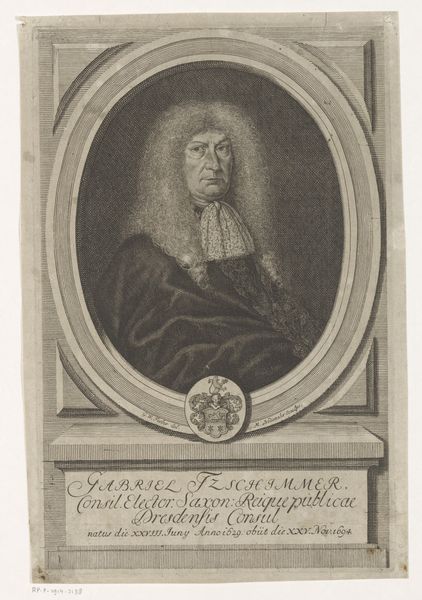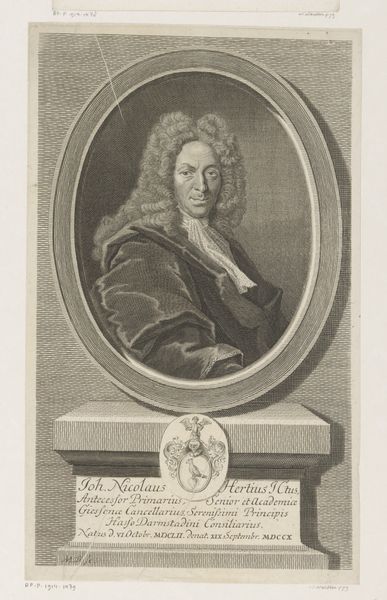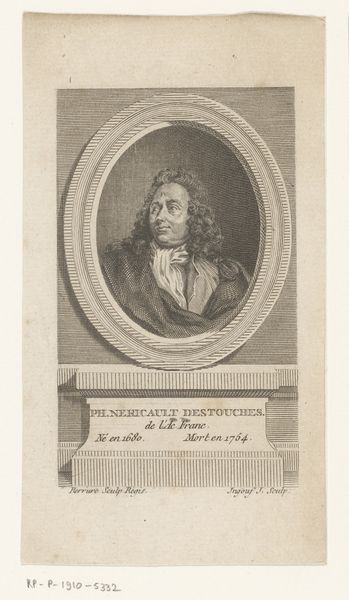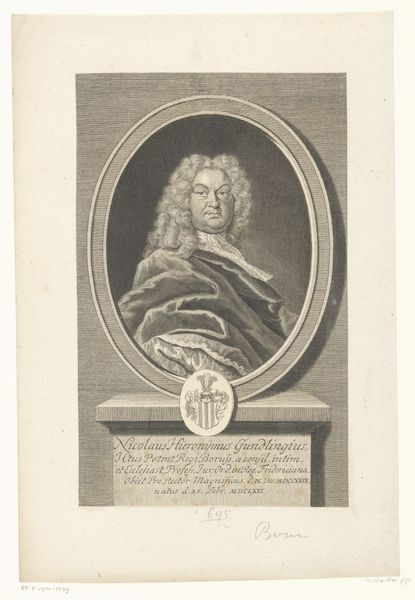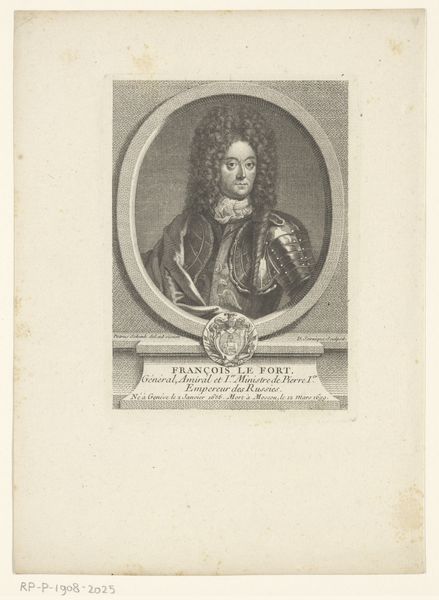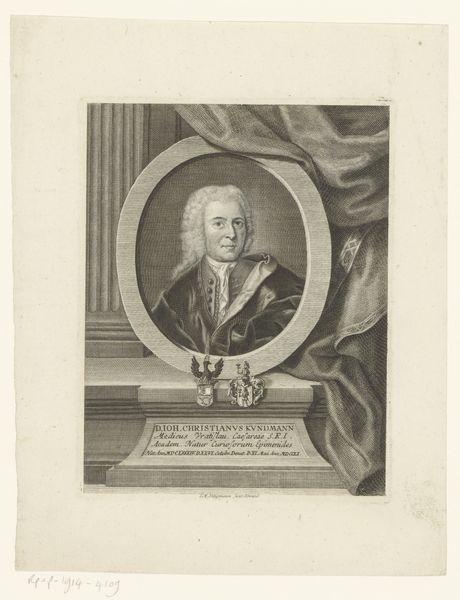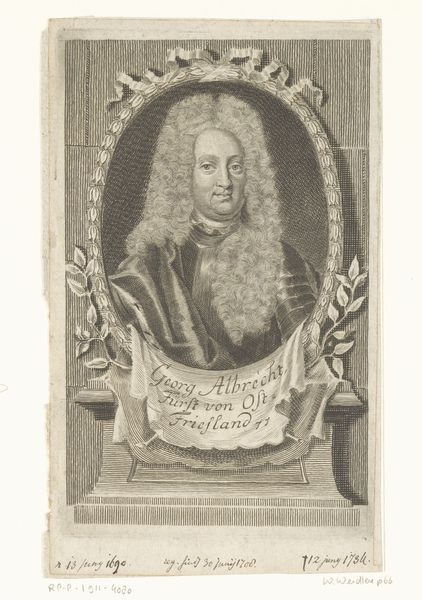
Portret van Johann Friedrich Carl von Ostein, keurvorst en aartsbisschop van Mainz 1743 - 1765
0:00
0:00
print, engraving
#
portrait
#
baroque
# print
#
old engraving style
#
portrait reference
#
line
#
history-painting
#
engraving
#
realism
Dimensions: height 156 mm, width 95 mm
Copyright: Rijks Museum: Open Domain
Curator: Here we have a piece titled "Portret van Johann Friedrich Carl von Ostein, keurvorst en aartsbisschop van Mainz" created sometime between 1743 and 1765. It's a print by Johann Wilhelm Stör, currently residing here at the Rijksmuseum. Editor: Heavens, what a formidable fellow. There's a certain severity radiating from this portrait, even within its delicate lines. It evokes a sense of baroque grandeur but also almost palpable authority, wouldn't you agree? Curator: Indeed. Stör has captured von Ostein, the Archbishop, with impressive detail using the engraving technique. Notice the meticulous lines creating textures, from the fur trim to the wig's elaborate curls. It’s a symphony of lines defining status and power. Editor: The composition, though quite conventional, adheres to its purpose. The oval frame, the inscription on the pedestal, all serve to emphasize the man's importance. Even the very 'linear' quality—every contour feels distinctly marked, further underscores the formality, and the controlled atmosphere. Curator: I’m drawn to how the precision conveys both the physical likeness and something more, an aura perhaps? It reminds me that the best portraiture is also able to make the subject iconic through their bearing. I mean the eyes command the viewer to stop and obey! Editor: Yes, although it also feels like it lacks depth beyond surface appearances—technically impressive of course! I think that the old engraving style evokes certain limitations when attempting emotional accessibility beyond sheer regality; almost distancing by technique instead if truly revealing character which leaves less empathy to perceive from this personage we have shown here because instead the feeling now points to the art piece itself rather human emotion depicted upon its flat image Curator: I agree. As a tool to transmit personal narrative in today's terms its shortcomings is apparent to its viewers since art continues down unique expressive avenues than those confined like it Editor: Indeed; despite differences present today it continues echoing through its time creating resonance whether technically advanced today's or traditionally reliant ones were from long past. So long gone but certainly hardly being missed nowadays.
Comments
No comments
Be the first to comment and join the conversation on the ultimate creative platform.
